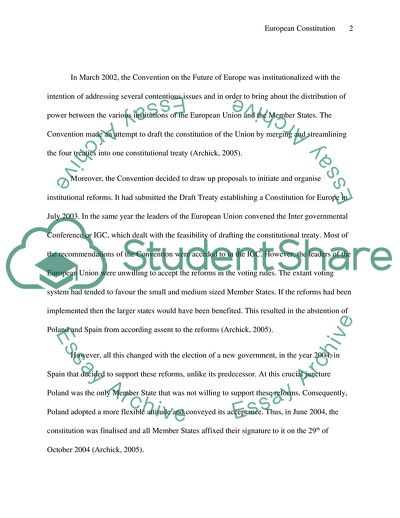Cite this document
(Is a European Constitution Possible Coursework Example | Topics and Well Written Essays - 2000 words, n.d.)
Is a European Constitution Possible Coursework Example | Topics and Well Written Essays - 2000 words. Retrieved from https://studentshare.org/politics/1706715-is-a-european-constitution-possible-what-are-the-implications-for-social-policy
Is a European Constitution Possible Coursework Example | Topics and Well Written Essays - 2000 words. Retrieved from https://studentshare.org/politics/1706715-is-a-european-constitution-possible-what-are-the-implications-for-social-policy
(Is a European Constitution Possible Coursework Example | Topics and Well Written Essays - 2000 Words)
Is a European Constitution Possible Coursework Example | Topics and Well Written Essays - 2000 Words. https://studentshare.org/politics/1706715-is-a-european-constitution-possible-what-are-the-implications-for-social-policy.
Is a European Constitution Possible Coursework Example | Topics and Well Written Essays - 2000 Words. https://studentshare.org/politics/1706715-is-a-european-constitution-possible-what-are-the-implications-for-social-policy.
“Is a European Constitution Possible Coursework Example | Topics and Well Written Essays - 2000 Words”. https://studentshare.org/politics/1706715-is-a-european-constitution-possible-what-are-the-implications-for-social-policy.


